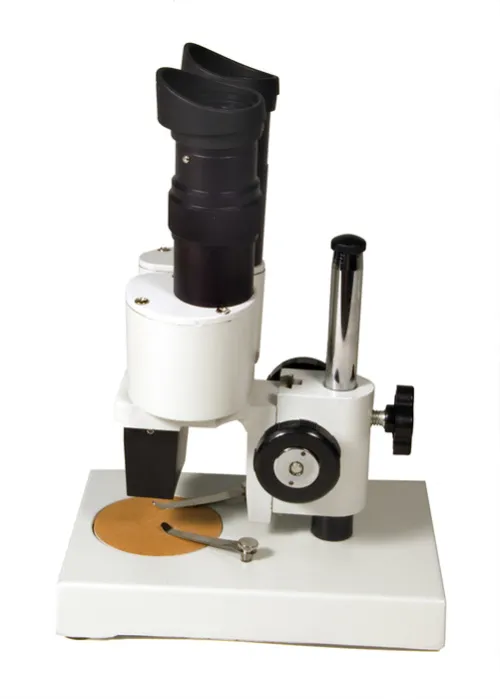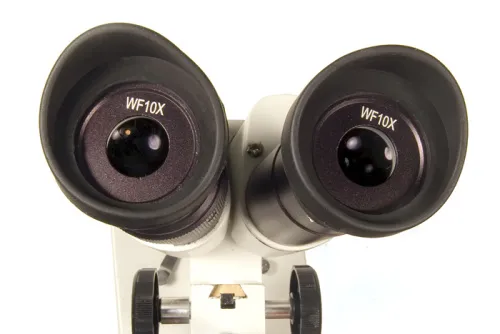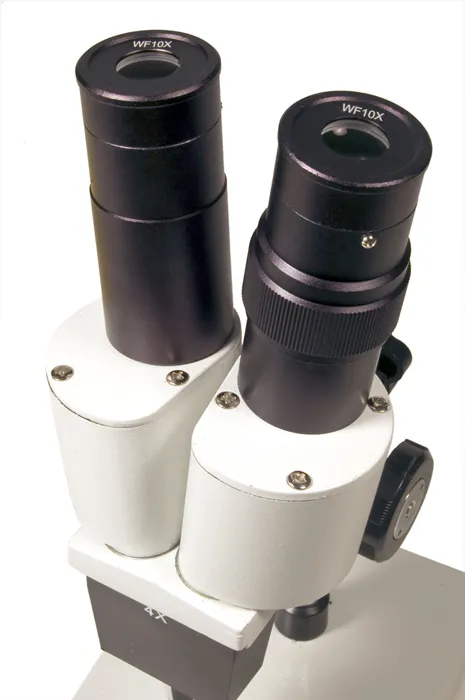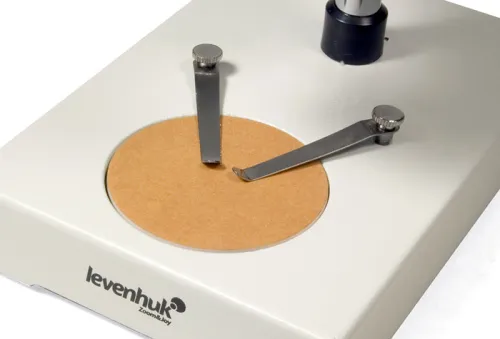Levenhuk 2ST Microscope
Stereo microscope. Binocular head. Magnification: 40x
| Product ID | 35322 |
| Brand | Levenhuk, Inc., USA |
| Warranty | lifetime |
| EAN | 5905555004549 |
| Package size (LxWxH) | 45x32x32 cm |
| Shipping Weight | 1.8 kg |
Levenhuk 2ST Microscope is a modern tool with a long working distance of 60 mm (2.4 in) and maximum magnification of 40x. Such a working distance allows for observations of relatively large samples, such as minerals, jewelry, coins and other objects of interest - not just flat specimens and thin slices. This wide range of applications allows using the Levenhuk 2ST Microscope as an educational tool for many scientific and industrial technology subjects, and would make a great high school microscope.
Modern stereo microscopes are widely used for high-precision operations during observations of small objects. They render 3D images of observed objects and allow for precise measurements of their dimensions. Such microscopes are invaluable for scientific research and may be used for studying archaeological, biological and technological objects, jewelry, antiques, and so much more. Reliable and multi-functional, stereomicroscopes are ideal microscopes for schools and higher education institutions.
Optical elements of this microscope are made of highly transparent glass, which allows for rendering images of observed objects with unprecedented levels of quality. The image is brought into focus by turning the coarse focus wheel on the microscope body. Natural illumination is used for observations, so you will not have to spend any money on batteries.
For even more comfortable observations, you can rotate the stage plate so that it faces either the black or the white side upwards, and besides, hold a specimen in place with the useful stage clips.
The kit includes:
- Levenhuk stereo microscope
- Binocular head
- WF10x eyepiece – 2 pieces
- 4x objective lens
- Double-sided black and white stage plate
- Rubber eyecups
- User manual and lifetime warranty
Levenhuk 2ST Microscope is compatible with Levenhuk digital cameras (purchased separately).
| Product ID | 35322 |
| Brand | Levenhuk, Inc., USA |
| Warranty | lifetime |
| EAN | 5905555004549 |
| Package size (LxWxH) | 45x32x32 cm |
| Shipping Weight | 1.8 kg |
| Type | stereo/instrumental |
| Microscope head type | binocular |
| Optics material | optical glass |
| Head | fixed (non-rotatable) |
| Head inclination angle | not angled |
| Magnification, x | 40 |
| Eyepiece tube diameter, mm | 30.5 |
| Eyepieces | WF10x |
| Objectives | 4x |
| Working distance, mm | 60 |
| Interpupillary distance, mm | 60 |
| Stage, mm | Ø58 |
| Stage moving range, mm | fixed |
| Stage features | black-and-white double-sided plate, with clips |
| Eyepiece diopter adjustment, diopters | ±5 |
| Focus | сoarse: 40mm |
| Body | metal |
| Illumination | natural light |
| User level | beginners |
| Assembly and installation difficulty level | extremely simple |
| Application | for applied research |
| Illumination location | upper |
| Research method | bright field |
| Pouch/case/bag in set | dust cover |
We have gathered answers to the most frequently asked questions to help you sort things out
Find out why studying eyes under a microscope is entertaining; how insects’ and arachnids’ eyes differ and what the best way is to observe such an interesting specimen
Read this review to learn how to observe human hair, what different hair looks like under a microscope and what magnification is required for observations
Learn what a numerical aperture is and how to choose a suitable objective lens for your microscope here
An interesting review on how such microscopes work, form the 3D image and in what fields they are applied
Learn what a spider looks like under microscope, when the best time is to take photos of it, how to study it properly at magnification and more interesting facts about observing insects and arachnids
This review for beginner explorers of the micro world introduces you to the optical, illuminating and mechanical parts of a microscope and their functions
Short article about Paramecium caudatum - a microorganism that is interesting to observe through any microscope










